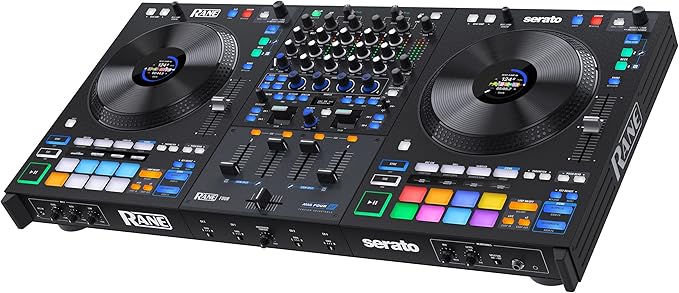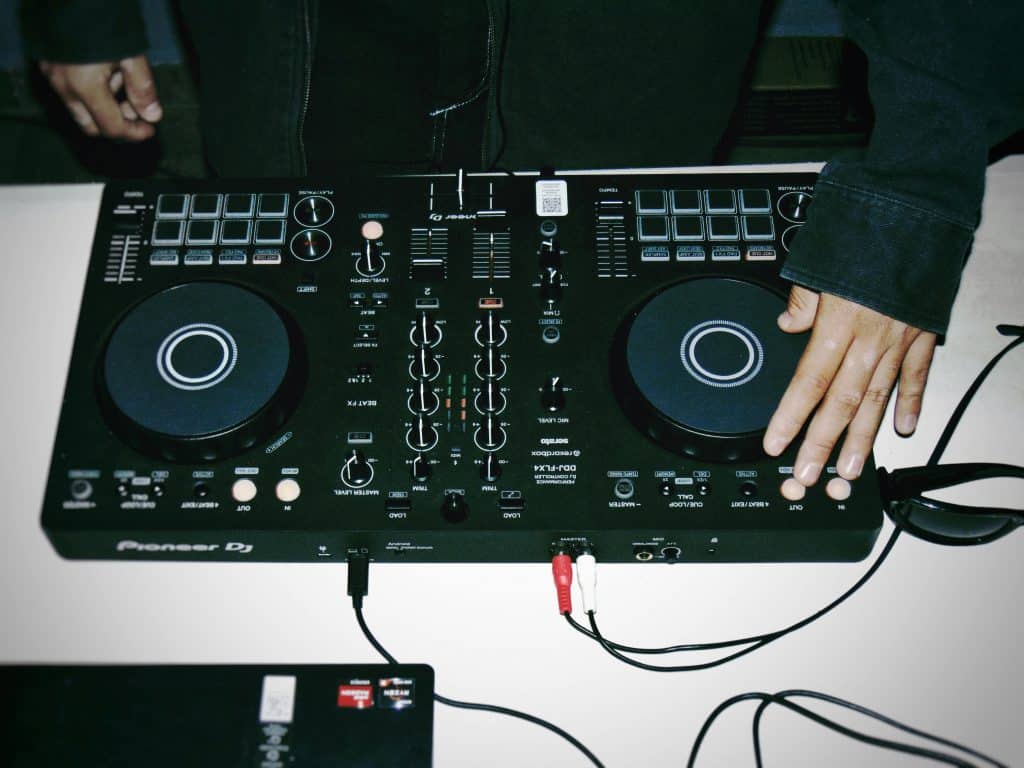
🎯 Why the Choice of Controller Matters
As a DJ, your controller is your physical “bridge” to the music. It’s where you touch knobs, hit pads, judge jog wheels, cue your tracks, and react live. A poor controller can frustrate even a talented beginner; a well-chosen one can accelerate your progress and make learning more fun.
When assessing controllers, keep an eye on:
-
Build quality / reliability
-
Platform / software support (Serato, Rekordbox, Engine, etc.)
-
Feature set (number of channels, pads, effects, display)
-
Usability for beginners (simplicity, layout, consistency)
-
Scalability — can it grow with you
Now, let’s walk through what Denon, Pioneer, and Rane offer — and where each brand’s strengths and trade-offs lie.
🧩 Pioneer DJ Controllers
Overview & positioning
Pioneer (now under the umbrella brand AlphaTheta) is perhaps the dominant DJ brand. Its gear is ubiquitous in clubs, so using a Pioneer-compatible controller gives you a more seamless bridge to “pro” environments. Wikipedia Pioneer / AlphaTheta continues making consumer & professional controllers under the “DDJ-” line and club / media player gear like the CDJ series.
Because they are so widely used, learning on a Pioneer-style layout can ease your transition to club setups.
Strengths
-
Excellent software support (especially with Rekordbox)
-
Lots of models across price ranges
-
Familiar layout to industry gear
-
Strong community, third-party tutorials, and spare parts
-
Balanced feature sets (pads, effects, displays)
Trade-offs / cons
-
Some models use more plastic to reduce cost
-
Features may be split across tiers (so cheaper models may lack things you’ll want later)
-
Sometimes more expensive for the same spec as “lesser known” brands
Models & price tiers (examples)
-
Pioneer DJ DDJ‑FLX4
Entry / beginner model, 2 channels. Good for learning basics. Moderate price point (often a few hundred pounds). -
Pioneer DJ DDJ‑REV1
Another beginner model, designed with Serato compatibility. -
Pioneer DJ DDJ‑FLX10
A more advanced 4-channel model with modern features.
These are just examples; Pioneer has many more models in between and above these.
Pioneer is often praised for solid software integration, but in head-to-head tests (e.g. versus Rane’s top models), some critiques point to the plastic build or feature crunch in lower tiers. Digital DJ Tips+1
🔄 Denon DJ Controllers
Overview & positioning
Denon DJ (part of inMusic) has been building momentum, especially in the standalone controller / media player space. They often push design and feature innovations (large screens, standalone streaming, multi-core CPUs) in their controllers. Sweetwater+2denondj.com+2
Their “Prime” or “SC Live” lines blur the line between controllers and full DJ systems (i.e. you sometimes don’t even need a laptop).
Strengths
-
Standalone capabilities (some models don’t require a laptop)
-
High build ambition with good internal specs (processors, displays)
-
Flexible / future-oriented — new features tend to arrive earlier in their higher end gear
-
Good integration with streaming, internal OS (Engine OS)
Trade-offs / cons
-
Some models (especially top tiers) are pricey
-
Complexity can overwhelm beginners (lots of features to learn)
-
Fewer legacy tutorials compared to Pioneer (though growing)
-
Certain features may be “premium only” in the lineup
Models & price tiers (examples)
-
Denon DJ SC LIVE 4
A 4-deck standalone controller, often cited as a strong all-rounder. Compatible with Serato, etc. -
Denon DJ Prime Go
More portable / stripped down, ideal for beginners wanting portability. -
Denon DJ Prime 4+
A powerful, full-featured controller / system with many pro capabilities built in. -
Denon DJ LC6000 Prime
A performance expansion controller (to augment setups).
Denon’s SC and Prime lines often command mid-to-high price brackets, but you get features that often outpace similarly priced competitors.
Some users switching to Denon praise how bold the features are; others caution that for beginners, the learning curve is steeper. Reddit
🔄 Rane Controllers
Overview & positioning
Rane has a reputation in the DJ and performance community for building rugged, high-performance gear. They tend to cater more to advanced / open-format, battle, and performance DJs. Their controllers often lean toward tactile control, excellent build, and more “serious” features.
Rane’s designs often emphasize durability, precision, and direct control, sometimes at the cost of beginner simplicity.
Strengths
-
Solid hardware: build, responsiveness, tactile feel
-
Often tight integration with Serato and advanced features (stems, battle-style layouts)
-
Good for DJs who already know they’ll push harder in time
-
They often target performance and pro features faster
Trade-offs / cons
-
Higher price for entry-level models
-
Less forgiving for beginners (less “handholding”)
-
Fewer extremely low-cost models
-
The layout or features might be overkill if you're just doing basic mixing
Models & price tiers (examples)
-
Rane Twelve
Motorized DJ controller (mimics turntable feel). -
Rane Twelve MKII
Updated version of above, with refinements. -
Rane Performer
A full 4-channel controller aimed at power users / performance DJs. -
RANE ONE MKII
A high-end motorized single-deck style controller. -
Rane DJ Four
A 4-channel stems controller, pushing cutting-edge control.
Rane’s higher end controllers have been praised for their tactile response, but sometimes critiqued for less “bells and whistles” in visuals or extras compared to Pioneer/Denon counterparts. Crossfader+1
🆚 Head-to-head: Which Brand Suits a Beginner Best?
When advising a new DJ, here’s what I often tell them when comparing these three brands:
| Consideration | Pioneer | Denon | Rane |
|---|---|---|---|
| Ease of entry | Good — many beginner & mid models, strong ecosystem | Moderate — models are powerful but maybe over-featured for absolute beginner | Challenging — fewer ultra-basic models, more performance-level gear |
| Layout to club gear | Strong — many clubs use Pioneer layouts or inspired layouts | Fair — good, but less “industry standard” than Pioneer | Variable — very capable, but sometimes non-mainstream layouts |
| Feature headroom | Strong upgrade path upward in Pioneer line | Very strong — many controllers already include advanced features | Strong for those who know they’ll push into pro / battle territory |
| Durability & reliability | Varies by model, but solid support and parts | Good — quality hardware, serious components in many models | Excellent — high-quality components, rugged builds |
| Value at entry level | Good — decent specs for affordable models | Value is strong if features are used; some overhead | More premium from early on — price premium for premium build |
If I were advising a student just starting: Pioneer is a safe all-round choice because of ecosystem, availability, and community. Denon offers powerful options with futuristic features. Rane is perfect for those who know they want to push harder, perform, scratch, or battle.
💡 Tips for Novices Choosing a Controller
-
Don’t overpay for features you won’t use immediately. Start with something that covers basic mixing, cueing, effects — advanced “bells & whistles” can wait.
-
Check software compatibility. A controller is only as good as how well it works with your DJ software (Serato, Rekordbox, Engine).
-
Try before you buy (if possible). Test jog wheels, feel, layout in store or via friends.
-
Look for replaceable parts. Cables, pads, knobs—all wear out—so being able to replace them is valuable.
-
Think of scalability. If your controller can’t grow with you, you may need to replace it soon.
-
Weight vs portability. Bigger controllers are great but harder to move; smaller ones are handy for home / travel use.

